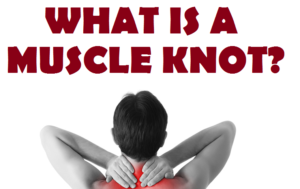
Over the next few weeks, I am going to cover some frequently asked questions that pop up during a massage treatment. Today I’m starting with Knots and tension in the muscles, otherwise known as Myofascial Trigger Points. Many of the activities and events that create knots are obvious such as falls, muscle strain and the infinite varieties of muscle use!
In today’s world, we find ourselves working at our computer, driving, holding our phones and books over your head while you lie down for prolonged periods of time, this causes low-level constant contraction of several muscles. A knot forms when a muscle or a group of muscles stays tensed and becomes painful. The size of a knot will vary depending on the number of muscle fibres involved.
Sometimes trigger points can be hard to subdue. After you seem to have successfully defeated them, you may find that they come right back. The apparent comfort and familiarity of a long-time habit can make you unaware of its effects on the muscles. It is wise to examine how you sit, stand, lift and work in order to find the ways in which you subject muscles to continuing tension and strain. Develop an awareness and take steps in improving these factors.
When Muscles and tendons become damaged or impaired, knotted and tense or immobile, remedial massage provides a healing treatment that can stimulate the blood supply allowing toxins in the muscles to be removed, calming the peripheral nervous system to ease pain and discomfort and helping to improve overall health of the cells, repairing tissue and easing stiffness and tension.
Sasha
]]>The arrival of stone massage therapy in the modern West began in 1993 when heated stone techniques became popular. The full-body, hot-stone massage is frequently combined with other modern massage techniques such as Swedish massage and deep tissue massage.
Aqualive Stone Therapy treatment uses smooth, heated basalt stones which are massaged over the body as the therapeutic heat slowly radiates into the body, easing muscle stiffness, increasing circulation, metabolism and inducing a state of calm relaxation.
Hot Stones also expand blood vessels, which encourages blood flow throughout the body.
The hot stones have a sedative effect and helps relieve chronic pain, reduce stress and promote a deep relaxation.
Benefits of Hot Stone Massage
- Provides relief from pain associated with fibromyalgia, arthritis, and more.
- Decrease pain and muscle spasms
- Reduces chronic stress and tension
- Increase flexibility in joints
- Relieves pain and tension created by strained muscles
- Helps decrease Insomnia
- Has a ‘feel-good’ factor and give you a sense of overall good wellbeing.